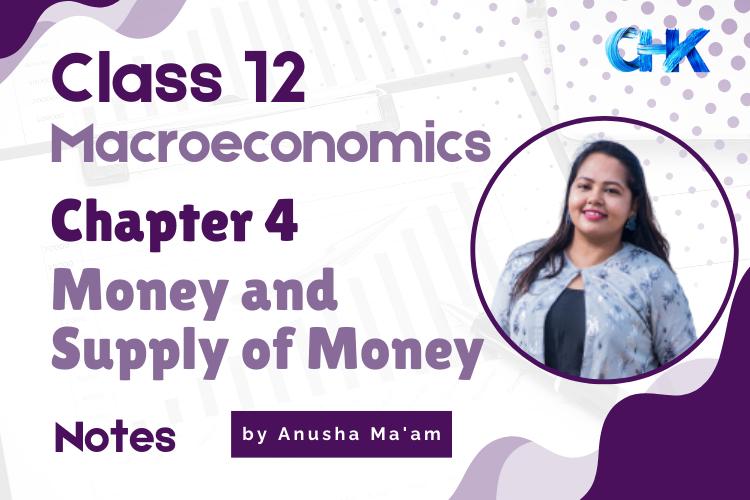
Money and Supply of Money : CBSE Class 12 Macroeconomics
Understanding the fundamentals of money and money supply is critical for CBSE Class 12 students delving into the field of macroeconomics. These concepts are the foundation of monetary economics and play an important role in creating economic policy and comprehending economic activity. These Money and Supply of Money Notes will provide a complete overview of these topics, summarising major aspects and offering insights to help you understand these critical concepts.
CHK offers the best Revision Notes to help students achieve very high test scores and reduce anxiety prior to exams. Studying commerce subjects can be challenging with the array of topics and concepts you need to master. We recognize that having reliable and easy-to-understand notes is crucial for your success. Here’s why our free notes can make a difference.
Key Takeaways
- Meaning and Evolution of Money-
- Money as a Medium of Exchange and Beyond
- Forms of Money
- Functions of Money
- Supply of Money- Concept of Money Supply and Measurement of Money Supply
CBSE Class 12 Macroeconomics Money and Supply of Money Notes PDF Download
The goal of the Macroeconomics Money and Supply of Money Notes PDF is to aid students in their exam preparation and help them ace it. Notes are available for students to download for free in PDF format.

Click here to Download CBSE Class 12 Macroeconomics Chapter 4 Money and Supply of Money Notes PDF
Also Download Free – CBSE Class 12 IED Chapter 4 HUMAN CAPITAL FORMATION IN INDIA Notes PDF
FAQ
1. What is Money?
Definition: Money is any item or record that is universally accepted in exchange for goods and services and as a measure of value. It serves three main functions:
- Medium of Exchange: Facilitates transactions by eliminating the need for a barter system.
- Unit of Account: Provides a consistent measure for valuing goods and services.
- Store of Value: Maintains its value over time, allowing individuals to save and defer consumption.
Types of Money:
- Commodity Money: Money with intrinsic value, such as gold or silver coins.
- Fiat Money: Money with no intrinsic value but is accepted by government decree, such as paper currency.
- Representative Money: Money that represents a claim on a commodity, like a gold certificate.
2. The Supply of Money
Definition: The money supply refers to the total amount of money available in an economy at a given time. It is crucial because it affects inflation, interest rates, and overall economic activity.
Measures of Money Supply:
- M0 (Base Money): The total of all physical currency (coins and paper money) and central bank reserves. It is the most liquid form of money.
- M1: Includes M0 plus demand deposits (checking accounts) and other highly liquid assets.
- M2: Includes M1 plus savings accounts, time deposits, and other near-money assets.
- M3: Includes M2 plus large time deposits, institutional money market funds, and other larger liquid assets.
3. Where Can I Find Additional Resources on Macroeconomics?
- Textbooks: Refer to your Class 12 Macroeconomics textbook for detailed explanations and examples.
- Educational Websites: Website like ours comerc.in or apps like CHK Commerce Classes, offer useful resources.
- Class Notes: Review your class notes and materials provided by your teacher for specific details related to your syllabus.
4. How should I prepare for exams using these notes?
- Review Regularly: Go over your notes frequently to reinforce your understanding.
- Practice Questions: Solve past exam papers and sample questions related to this Chapter.
- Teach Concepts: Explain the concepts to peers or family members to test your understanding.
- Make Summary Sheets: Create quick reference sheets for last-minute revisions.
For study material related to Economics Class 12, students can visit the CHK app or website.
for more information contact us –
Ph. No. – +91-6367885579
WhatsApp – Click to chat
facebook – @commercehubkota
Instagram – @comerc_classes
Youtube – @commercehubkota
Telegram – @comerc.in



